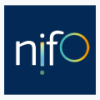
National Interoperability Framework
The National Interoperability Framework (NIF) is a set of standards, policies, and guidelines that ensure that information and communication technology (ICT) systems can communicate and share data seamlessly. It promotes the development of interoperable systems that facilitate data exchange and collaboration between different organizations and levels of government. The NIF provides a common language and a framework for ensuring that ICT solutions are compatible, secure, and reliable, which enhances the efficiency of public services and improves citizen outcomes.
Austria Interoperability Framework Year: 2015 | The Austrian interoperability framework is a set of standards and guidelines aimed at ensuring the provision of services for public administration institutions, enterprises and citizens both in the national and the European context. |
Good Practices
This section provides examples at the national level in line with a selection of different thematic areas of the European Interoperability Framework (EIF). Further initiatives and good practices are available in the country’s Digital Public Administration Factsheet.
Open source software (OSS) and its total cost of ownership (TCO) are default considerations for new public service projects in Austria, though alternatives are still evaluated. The government published modules for online applications (MOA) as open source. Besides finances, factors like algorithm confidentiality, operational security, and legal issues (like liability) in software contracts are also important. A cross-ministerial group was formed to assess OSS use and strengthen its adoption. Current efforts include examining risks to digital sovereignty in critical IT systems, improving OSS use in education, evaluating open source for a digital sovereign workplace, reviewing OSS contract regulations, and coordinating further actions through an interministerial group.
Austria prioritises citizens' demands for easily accessible, comfortable, and fast mobile interactions with public authorities. To meet these demands, the country adopts a multichannel approach to service delivery, offering electronic services as an option rather than a requirement. They establish universal access points following the one-stop-shop principle and promote the interconnection of electronic systems, such as registers, to support the data-only-once principle. The 'digital Business Service portal' serves as a central access point for stakeholders in the economy, while 'Oesterreich.gv.at' serves citizens directly. Austria's solution architecture is designed to ensure user-centric services, based on life situations of citizens and entrepreneurs. Citizen engagement is fostered through dedicated conferences in large projects. Since 2020, Austria has legally enacted the 'right to digital interaction' as a central element of its user-centric digital-by-default approach. This commitment to user-centricity is further emphasised in the new Austrian E-Government Strategy 2023.
The "BLSG" (Cooperation between Federations, Provinces, Municipalities and other players - formerly known as "Platform Digital Austria (PDA)") coordinates e-government/digitalisation efforts amongst Austrian stakeholders, consisting both public and private institutions. The platform aims at developing common concepts, standards and specifications for digital (public) services as well as the harmonisation of these elements with international initiatives, thus fostering bot, cross-sector and cross-border interoperability.

